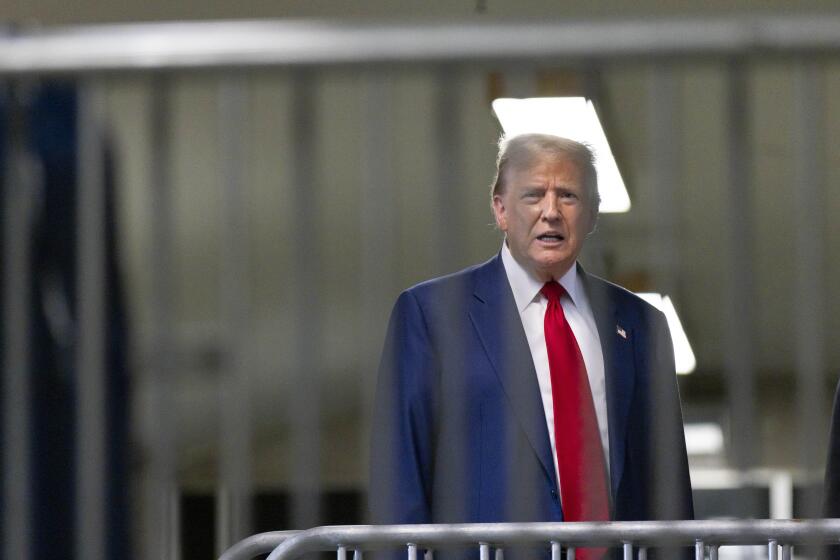O’Connor’s Balancing Act
Justice Sandra Day O’Connor distrusted abstract theories and broad rules. During her 24 years on the Supreme Court, she focused on the details of particular problems; she liked to proceed one case at a time.
Because of her commitment to cautious and narrow rulings, she was the court’s leading minimalist. Conservative in the literal sense of the word, she was a great stabilizing force on the Rehnquist court, and therefore for the nation as a whole.
O’Connor had no sympathy for the liberal activism of the Warren court. She refused to announce new rights lacking clear historical foundations. But in key areas, she rejected the far-reaching positions of Chief Justice William H. Rehnquist and Justices Antonin Scalia and Clarence Thomas as well. If she was a “swing vote” on the court, it was because she had no agenda, and because her willingness to focus on particular facts meant her conclusions could not be predicted in advance.
O’Connor’s most characteristic triumph came in the area of affirmative action. Many people, including Scalia and Thomas, have declared that the Constitution calls for a rigid rule in favor of colorblindness. Many others believe that the Constitution is perfectly compatible with affirmative action programs. O’Connor took a more nuanced view: She generally voted to strike down such programs, but she insisted that their legitimacy or illegitimacy depended on the particular facts -- on their concrete purposes and effects.
Her decisive victory came in 2003, when she wrote the majority opinion upholding an affirmative action program at University of Michigan Law School. O’Connor agreed that the Constitution would not permit racial quotas nor countenance a rigid system of “points” to favor minority applicants. But universities could consider race or ethnicity as a “plus” in a flexible process that affords genuinely “individualized consideration to applicants of all races.” O’Connor thus required the kind of case-by-case assessment that she herself liked to give to every problem.
Early on, O’Connor made clear her discomfort with the court’s decision protecting the right to choose abortion in Roe vs. Wade. She firmly disapproved of the court’s rigid “trimester system,” which set out simple rules to limit government authority in each phase of pregnancy. She accepted the pro-life claim that the protection of fetuses is a constitutionally legitimate goal. With her preference for balance, O’Connor contended that the question was always whether states had imposed an “undue burden” on the right to choose.
Her view ultimately triumphed in 1992, when a plurality of the court adopted her approach to the abortion question. The opinion emphasized that the nation had come to rely on the right to choose and that a “terrible price would be paid for overruling” Roe.
At the same time, the opinion allowed for certain restrictions. It acknowledged that a “woman’s liberty is not unlimited,” that the state’s interest in protecting the fetus was “profound,” and that some limits on liberty, including informed-consent rules, would be constitutionally acceptable. As a result of O’Connor’s minimalism, Roe remains law, but the court does not protect the right to choose as inflexibly as it did.
In the case of Yaser Esam Hamdi, a U.S. citizen of Saudi descent who was captured in Afghanistan and held as an enemy combatant for three years without charges, O’Connor rejected the Bush administration’s position, writing that he must be supplied with “notice of the factual basis for his classification, and a fair opportunity to rebut the government’s factual assertions before a neutral decision-maker.” In her minimalist fashion, she acknowledged the constitutional requirements might be met before a military tribunal.
Caution, prudence and incrementalism were O’Connor’s watchwords. Constitutional law is now defined, in large part, by “O’Connor concurrences” -- separate opinions in which O’Connor emphasized that the court’s decision was less far-reaching than it might seem, and in which she indicated her willingness to come to a different conclusion if the facts were even slightly different.
O’Connor liked small steps. She was not an ambitious judge when it came to theory. Her opinions followed the precepts of Edmund Burke, who was also skeptical of abstractions and grand ideas. Burke cherished above all “the science of jurisprudence, the pride of the human intellect, which, with all its defects, redundancies, and errors, is the collected reason of ages, combining the principles of original justice with the infinite variety of human concerns.”
O’Connor deeply respected that collected reason, and she added a great deal to it.
More to Read
Get the L.A. Times Politics newsletter
Deeply reported insights into legislation, politics and policy from Sacramento, Washington and beyond. In your inbox three times per week.
You may occasionally receive promotional content from the Los Angeles Times.






